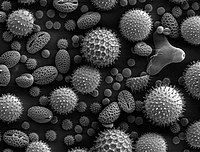
Photo from wikipedia
The accurate diagnosis of rhinologic disease depends on the clinical history, examination findings and, in many cases, further investigations. There are a wide variety of diagnostic tests available, the choice… Click to show full abstract
The accurate diagnosis of rhinologic disease depends on the clinical history, examination findings and, in many cases, further investigations. There are a wide variety of diagnostic tests available, the choice of which depends upon the condition being assessed. This position paper is intended to provide an up-to-date comprehensive description of the diagnostic tools available to rhinologists, allergists, general otolaryngologists and other physicians with an interest in sinonasal disease. The literature has been reviewed and evidence-based recommendations are included. The relevant history and examination techniques are described, including endoscopic assessment of the nose. General and disease-specific quality of life instruments are an important tool in assessing the impact of rhinologic disease and the response to treatment. Relevant blood tests are discussed, as well as the various methods of allergy testing. Techniques for collecting microbiological and tissue samples are described, as well as the use of more specialised tests such as nasal nitric oxide and those evaluating ciliary structure and function. Imaging techniques and their indications are included. Chemosensory (smell and taste) testing is explained, and the available techniques for objective measurement of nasal airflow and patency are reviewed. Prompt and accurate diagnosis allows appropriate management to be initiated; an understanding of the currently available diagnostic tools is a vital part of the assessment of rhinologic disease.
Journal Title: Rhinology
Year Published: 2019
Link to full text (if available)
Share on Social Media: Sign Up to like & get
recommendations!